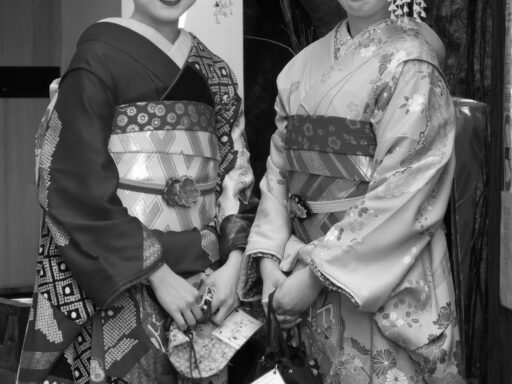Hanging, drawing, and quartering was a rare and extreme punishment reserved almost exclusively for crimes like treason and regicide. It aimed to deter threats to the state and was not commonly applied, as true cases of treason were infrequent. The harshness and spectacle of this punishment reflected the period’s legal and moral climate, which accepted severe public penalties as normal. Over time, societies shifted toward more humane approaches as jails developed, reformist ideas spread, and the effectiveness of violent deterrence was questioned.
Historically, hanging, drawing, and quartering served as a brutal sentence for high treason. This punishment included hanging almost to death, disembowelment, beheading, and finally dividing the body into four parts. Though horrifying by modern standards, it was not a widespread sentence. Its rarity stemmed from its purpose: to mark the severity of crimes that directly challenged monarchical authority or the state’s stability.
Public executions were events people attended, often dressed well to watch what was essentially a grim, communal display of justice. Rather than shocking the population, these spectacles reinforced state power. Jail systems as we know them were mostly absent before the 1800s. Punishments were mostly fines or capital sentences, with no prison time for reform. Execution was a straightforward tool, free of the morality debates common today.
- Early legal codes often prescribed punishments proportional to social hierarchy.
- Treason was seen as a crime against God since kings were considered divine representatives.
- Severe punishment served as a deterrent, aimed to be public and unforgettable.
Much of what people know about these punishments comes from pamphlets known as “matchbooks.” These brief publications spread stories of crimes and punishments to a semi-literate public, mixing education with sensationalism. Such materials amplified the reputation of hanging, drawing, and quartering beyond its actual frequency.
The last recorded case in England was in 1782 involving David Tyrie, convicted of treason through conspiracy with the French. By this time, some aspects of the punishment had begun to be moderated, such as allowing the victim to die by hanging before the gruesome stages followed.
The social acceptance of violent public punishments began to erode gradually with the emergence of prisons and new attitudes towards justice. The jail system’s rise brought a focus on reform and correction rather than revenge. Writers like Charles Dickens highlighted the harsh realities of the criminal justice system, influencing public opinion against barbaric punishments.
Observations in the 18th century revealed that fear of harsh sentences did not significantly reduce crime. For example, children still committed theft despite the threat of death, suggesting that brutal penalties were poor deterrents. This undermined the justification for horrors like hanging, drawing, and quartering.
The development of professional police forces in England introduced a new method of crime control. Policing offered a proactive approach to prevent crime instead of relying solely on punishment after the fact. This shift reduced public executions’ prominence and increased reliance on incarceration and law enforcement.
| Factor | Explanation |
|---|---|
| Public Spectacle | Executions were mass events reinforcing authority and deterrence. |
| Divine Order | Treason offended God and king, justifying extreme punishment. |
| Legal Culture | Absence of jails and prison reform meant execution was central. |
| Influence of Reformers | Writers and thinkers promoted rehabilitation over retribution. |
| Effectiveness Questioned | Punishment severity did not correlate with reduced crime. |
| Police Emergence | New crime prevention methods substituted brutal executions. |
The transition from violent punishments like hanging, drawing, and quartering to more humane systems was gradual. It reflected evolving ideas about justice, human rights, and effective crime control. Societies came to reject cruel public executions as barbaric and ineffective.
- Hanging, drawing, and quartering was rare, reserved for severe crimes, mostly treason.
- It reflected old beliefs tying the king’s person to divine authority, justifying harsh penalties.
- Public executions were social spectacles with widespread acceptance at the time.
- Development of jails and reformers’ ideas lessened the use of brutal punishments.
- Evidence showed harsh penalties did not deter crime effectively.
- Policing emerged as a more efficient alternative to prevent and reduce crime.
Hanging, Drawing, and Quartering: When Brutality Was the Lesson
Was hanging, drawing, and quartering controversial in its own time? The short answer is: not really, at least not in the way we think about controversy today. This gruesome punishment was designed to be a public warning and a theatrical declaration of power. But how did society shift from accepting such brutal spectacles to rejecting them? Let’s unpack it.
Most people today shudder at the idea of hanging, drawing, and quartering. It sounds like medieval torture porn. But back then? It was just part of the show. Executions were public gatherings, akin to a grim festival. Imagine Sunday picnics with an execution as the main event. No kidding.
In those days, jails were rare and rudimentary. The modern concept of imprisoning somebody just to keep them out of trouble wasn’t common until the 1800s. For much of history, incarceration was more about workhouses than true detention or rehabilitation. This meant that the justice system leaned heavily on fines and executions because they lacked better alternatives.
The Ghastly Method: Hanging, Drawing, and Quartering
Here’s the brutal truth: this punishment wasn’t meted out for petty crimes. It targeted the worst offenders—namely, those accused of treason or regicide. When a crime threatened the very foundation of governance or the “divine order” (remember, kings were believed appointed by God), the punishment matched the offense’s gravity. The law intended to send a crystal-clear message: betray the crown, and you face a fate worse than death.
This was no routine hanging. The condemned was hanged (but not until death), then drawn (dragged to the execution site), and finally quartered—torn into four parts, often dismembered alive. The whole ordeal was designed as a stark deterrent. Would you dare to betray the state knowing this awaited you?
Interestingly, while hanging, drawing, and quartering sounds like a common horror show, it was actually rare. Treason itself was uncommon. People tend to remember the most sensational punishments thanks to matchbooks. No, not the things that light your cigar—these were pamphlets popular with the semi-literate, sharing scandalous stories. They functioned like early tabloids, stirring public interest and, incidentally, reinforcing social order through fear.
The last known hanging, drawing, and quartering in England was given to David Tyrie in 1782, convicted for conspiring with the French. He was allowed to hang for over 20 minutes, perhaps softening what followed. The grisly details? Likely curtailed or “adjusted” by then.
So, why was it accepted then but condemned now?
It boils down to societal progress in justice and human rights. As jails developed, particularly in the 19th century, the focus shifted. Figures like Charles Dickens highlighted the plight of prisoners—not as irredeemable scoundrels, but as humans needing reform, not retribution.
People started questioning if brutal punishments really worked. Here’s a jarring fact: even when a kid aged 10 could be hanged for stealing bread in 1750, the theft of bread didn’t stop. Harsh punishments didn’t deter crime effectively. The assumption that draconian penalties stopped offenders crumbled under reality.
Societies also invented policing as a novel concept. Instead of waiting for crimes to happen and then punishing, the emergence of police forces aimed to prevent crime. This proactive approach was more humane and effective, slowly sidelining gruesome public executions.
The Motivation Behind Such Harsh Punishment
Why such cruelty? Historically, punishment reflected the crime’s weight. Ancient codes—like Hammurabi’s or the Burgundians’—read like detailed price lists, assigning costs for offenses, especially if committed against the elite.
Treason was uniquely heinous. Not only was the king’s authority at stake, but treason challenged the “divine order.” Punishing traitors was about protecting this sacred hierarchy through extreme measures. The severity was meant to scream “Don’t even think about it!”
Additionally, punishment served as a public spectacle—a stark deterrent. The visibility and memorability of punishments were crucial. A crowd witnessing a macabre execution was supposed to feel the weight of the law and the horror of its consequences. Public executions were social tools as much as legal ones.
Lessons for Today: What Can Modern Society Learn?
The story of hanging, drawing, and quartering is a grim reminder of how justice systems have evolved. What once passed as justice is now a human rights violation. It teaches us the importance of measuring punishment against humanity, effectiveness, and ethics.
Modern criminal justice has largely moved to rehabilitation, understanding root causes of crime rather than focusing solely on retribution. Effective deterrence now comes not from cruelty, but from fair law enforcement and social support systems.
It also reminds us to question our own norms. What practices today seem “normal” might be viewed as barbaric in the future. Would we have tolerated public executions in our streets if we’d lived back then? It’s hard to judge, but history shows society’s capacity to change for the better.
To Wrap It Up
Hanging, drawing, and quartering weren’t widely controversial in their own time because they were viewed as fitting punishments for the gravest crimes against the state and divine order. These punishments functioned as public warnings to uphold social stability. Our societies moved away from such brutal practices thanks to the development of jails, emerging police forces, influential reformers like Charles Dickens, and a growing realization that extreme cruelty failed as an effective deterrent. Today, these horrific punishments serve as stark reminders of the progress humanity has made toward justice and humanity.
Next time you catch yourself groaning at a history documentary or reading about medieval punishments, remember: our ancestors watched these brutal spectacles through a very different lens. Progress is messy but undeniable.


